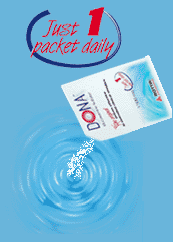 Loading... Please wait...
Loading... Please wait...
|

Order DONA™ through our new official corporate website: www.wynnpharm.com
|
18. Why chondroitin sulfate is combined with glucosamine-derived compounds in some dietary supplements? Is there a rationale to administer both Glucosamine Sulfate and chondroitin sulfate? Chondroitin sulfate is a glycosaminoglycan normally present in the cartilage matrix and consisting of a high molecular weight, long chain of repeating units of differently sulfated residues of glucuronic acid and N-acetyl galactosamine, obtained with extraction processes from animal tissues. It is used in some countries for the treatment of osteoarthritis on the basis of a rationale that is speculatively similar to that of Glucosamine Sulfate, which is difficult to understand given the major differences in physico-chemical properties (a macromolecular tissue extract compared to the Glucosamine Sulfate pure, low molecular weight single molecule of semi-synthetic origin).
Anecdotal evidence claims that combination of dietary supplements containing chondroitin sulfate and glucosamine-derivatives may offer added value in the treatment of osteoarthritis. However, there is no scientific proof for this claim and, on the basis of the discussion above, the rationale of such a combination is also weak since adding chondroitin to glucosamine would mean, at most, only to slightly increase the dose of glucosamine. Two very small clinical trials have shown that this combination is actually effective in the short-term treatment of osteoarthritis symptoms, but this is not surprising given the high efficacy of Glucosamine Sulfate and that may in part be applied to other glucosamine-derivatives. Indeed, studies with the original Glucosamine Sulfate have shown that its effects on osteoarthritis symptoms are so strong that even the combination with potent symptomatics such as NSAIDs may bring no added value. Therefore, it would be necessary to show in appropriate clinical trials that the combination with chondroitin sulfate works better than Glucosamine Sulfate alone, which would be hard to demonstrate.
These statements have not been evaluated by the Food & Drug Administration. This product is not intended to diagnose, treat, cure or prevent any disease.
|
| <<Back |



